💪 Support independent web, support us:
Consider hiring a knowledgeable guide to learn more about the history and mythology of the area.
2. Bayon Temple
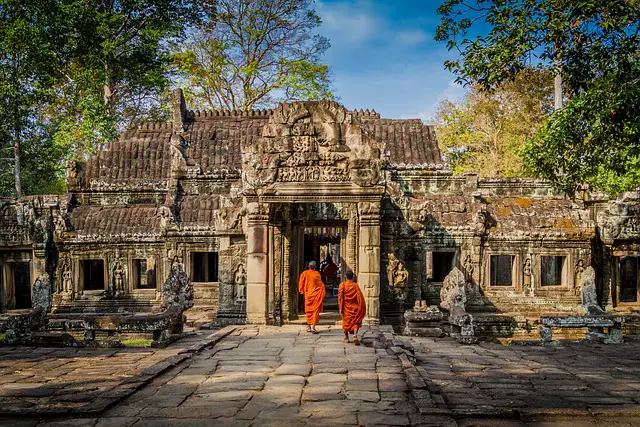
Bayon Temple is a well-known temple complex located in the ancient city of Angkor Thom, Cambodia.
Make sure to bring sunscreen and plenty of water, as the temple can get quite hot in the daytime.
3. Ta Prohm
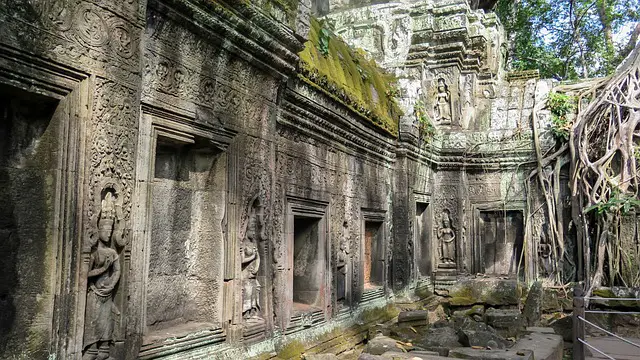
Insider travel tips: Visit early in the morning to avoid the crowds and the harsh midday sun.
4. Angkor Thom
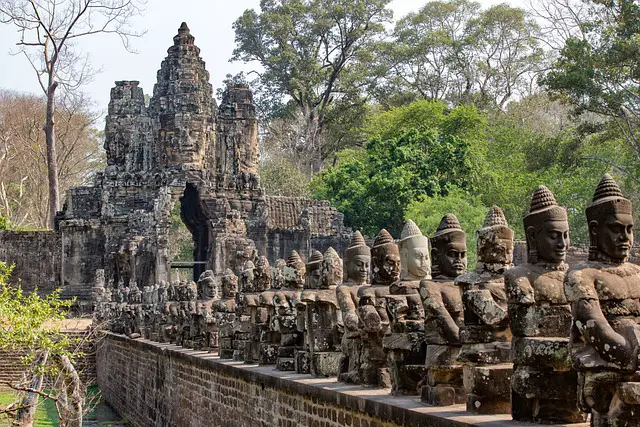
Ancient city in Siem Reap, Cambodia, built by the Khmer empire in the late 12th century.
5. Tonle Sap Lake
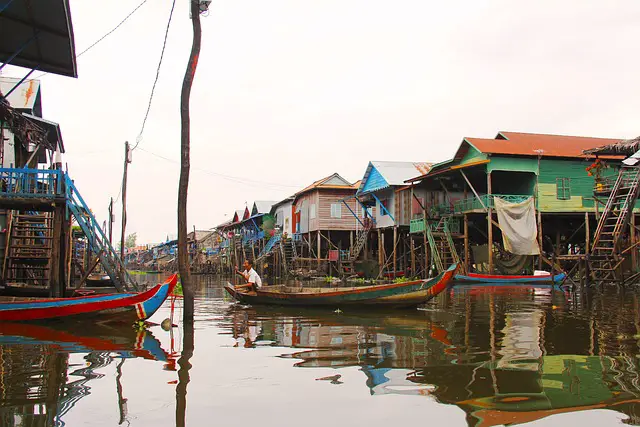
If traveling by road, be prepared for a bumpy ride.
6. Royal Palace
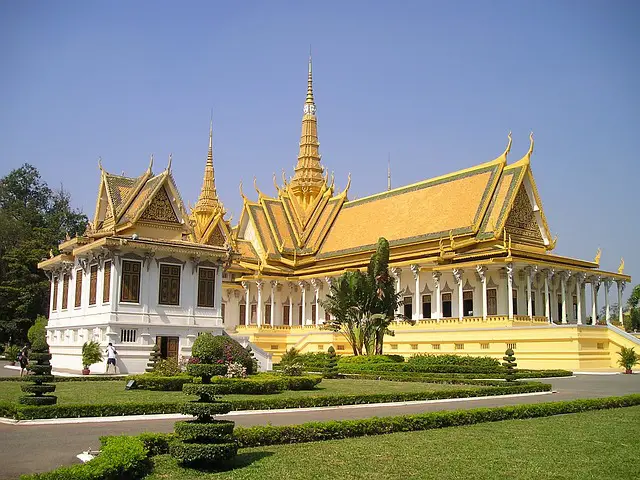
Also, check out the panoramic views of Madrid from the Sabatini Gardens located next to the palace.
7. Phnom Penh Night Market
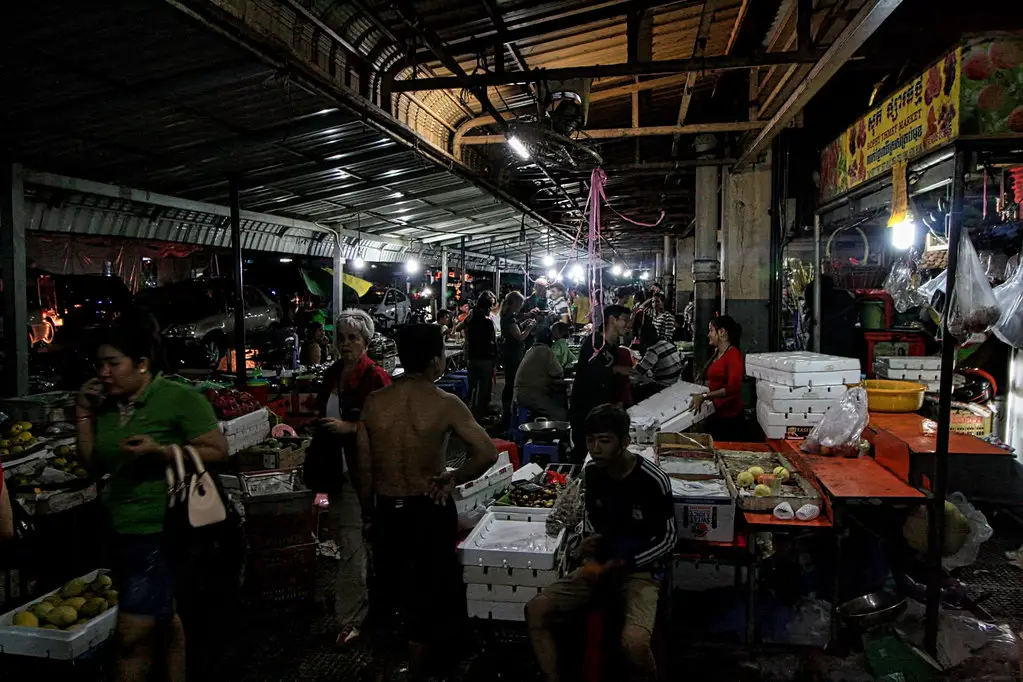
The Phnom Penh Night Market is a bustling open-air market that sells a wide range of goods including clothes, souvenirs, gadgets, and local cuisine.
What to see or do: Take a stroll around the market, browse through the stalls, try out some of the traditional Cambodian street food, and shop for unique gifts and keepsakes.
Don’t miss: A visit to the Khmer Boxing Club, where you can watch a traditional Cambodian boxing match or take part in a training session yourself.
Also, make sure to check out the live music performances and street entertainment that goes on in and around the market.
Insider travel tips: Though it’s open every night, the market can get very crowded, especially during the weekends.
Try to get there early to beat the rush and sample some of the best food offerings before they run out.
Bargaining is also a must, so make sure to haggle with the vendors to get the best deals.
8. Independence Monument
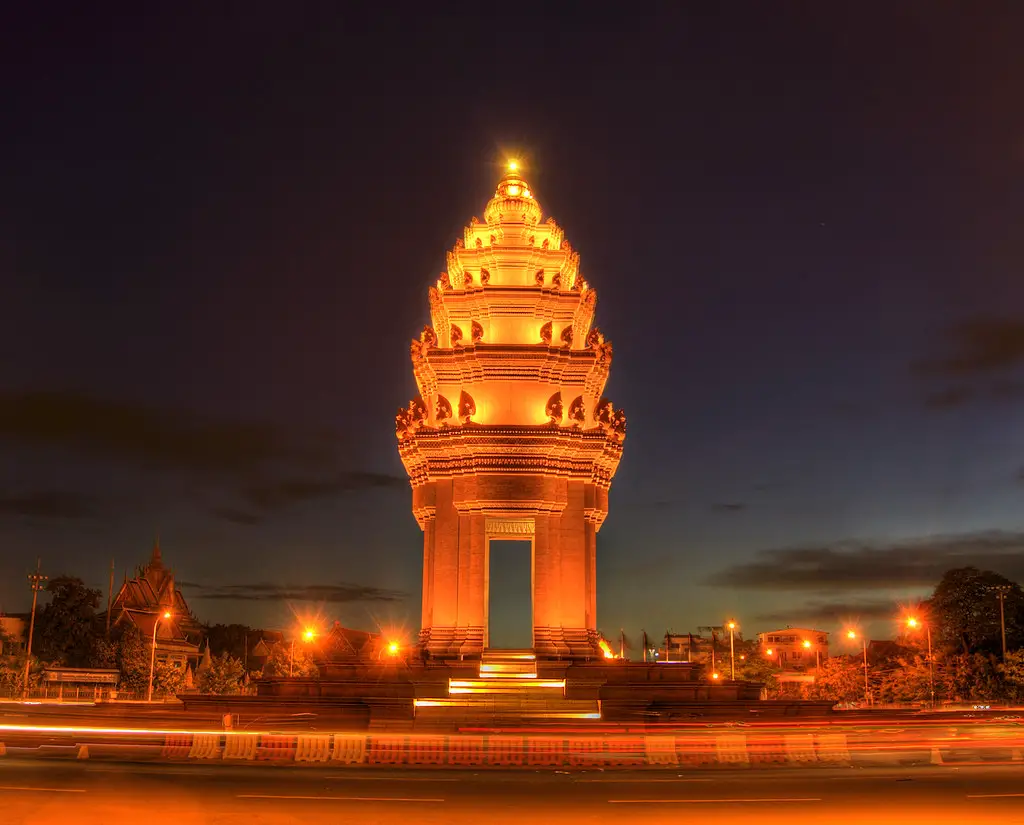
A historic monument located in the heart of Phnom Penh, Cambodia.
What to see or do: Visitors can admire the iconic architecture of the monument, which features a lotus-shaped stupa adorned with Naga snakes. The base of the monument is also decorated with traditional Cambodian motifs.
Don’t miss: The nightly light show, which illuminates the monument and makes for a stunning photo opportunity.
Insider travel tips: For a unique perspective on the monument, head to nearby Sihanouk Boulevard and take a walking tour, which allows you to see the monument from different angles.
Also, be sure to visit in the early morning or late afternoon to avoid the intense midday heat.
9. Wat Phnom
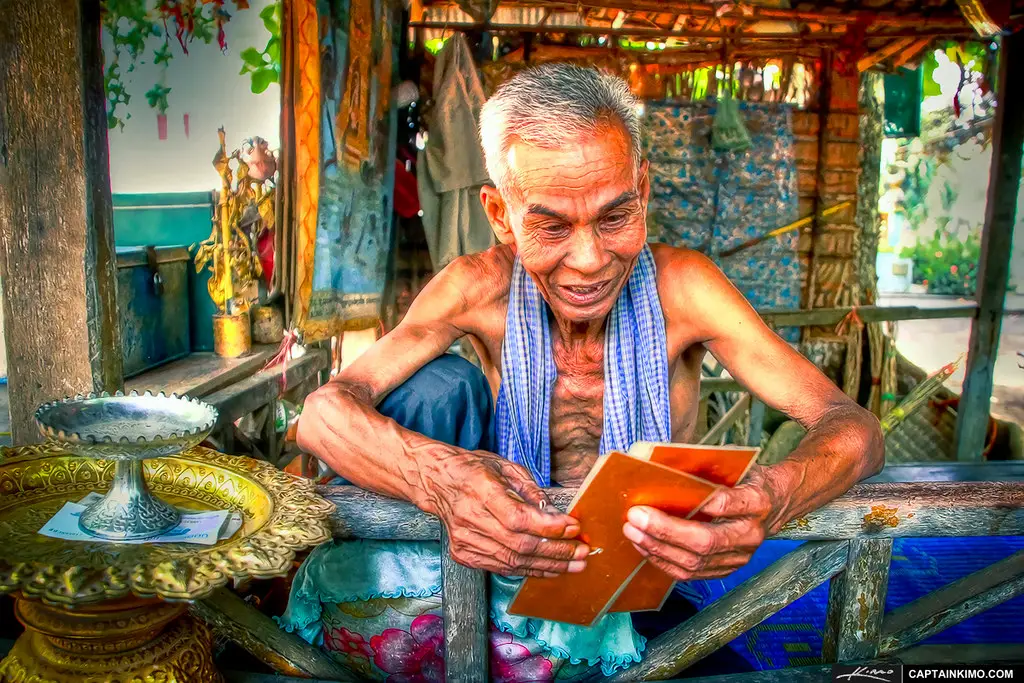
A Buddhist temple and popular tourist attraction located in Phnom Penh, Cambodia.
What to see or do: Admire the temple’s impressive architecture and intricate details, stroll through the beautifully landscaped gardens, and observe locals making offerings to the many shrines and statues on the temple grounds.
Don’t miss: The historic stupa (a hemispherical structure containing relics) located at the top of the hill on which the temple is situated.
It offers scenic views of the surrounding city.
Insider travel tips: Visit early in the morning to avoid crowds and enjoy a peaceful atmosphere.
Also, be prepared to climb a lot of stairs to reach the top of the hill, where the stupa is located.
10. Killing Fields of Choeung Ek
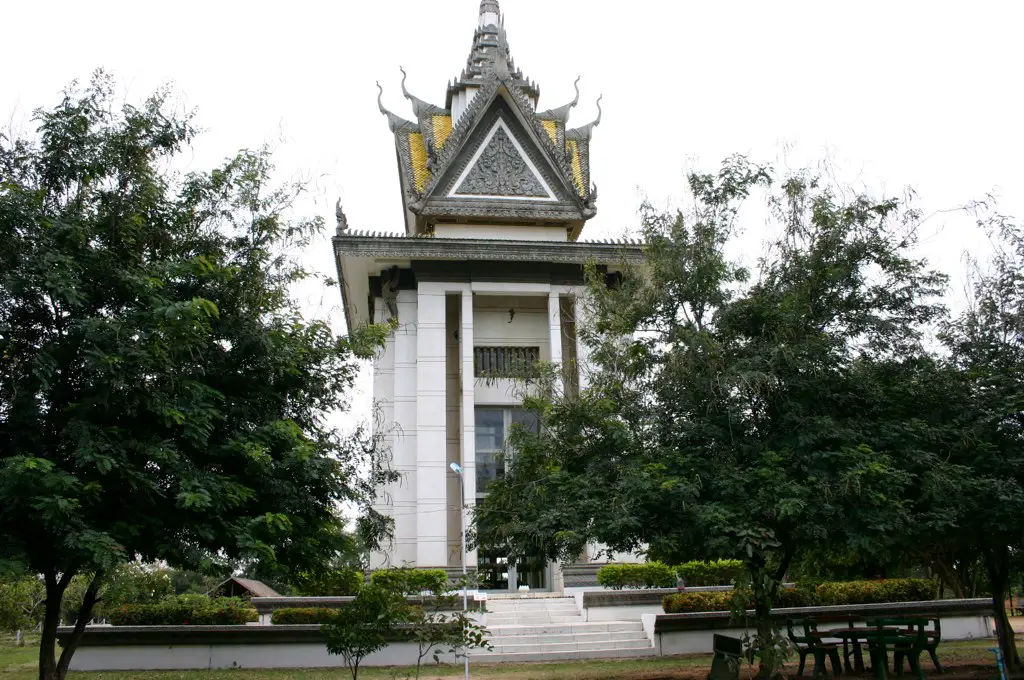
A historical site in Phnom Penh, Cambodia, where thousands were executed and buried by the Khmer Rouge regime during the late 1970s.
What to see or do: Visit the memorial stupa, which holds the remains of over 8,000 victims. Take an audio tour to learn about the history and significance of the site and listen to survivor testimonies.
Don’t miss: The tree against which babies were beaten to death. It serves as a chilling reminder of the brutality that occurred at this site.
Insider travel tips: Wear comfortable shoes as the terrain can be uneven. Bring a hat and sunscreen as shade is limited.
Respectful attire is recommended, as this is a place of remembrance.
11. Sihanoukville Beaches
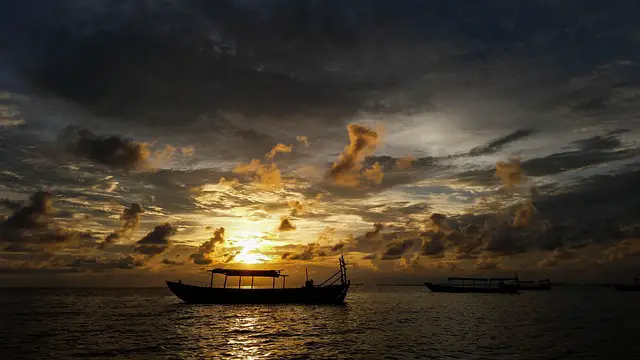
A collection of beautiful beaches and seaside towns located in Sihanoukville, Cambodia.
What to see or do: Enjoy pristine beaches with crystal clear waters, indulge in water sports such as jet skiing, parasailing, and snorkelling, explore the nearby islands, and sample delicious local cuisine at the beachside eateries.
Don’t miss: Serendipity Beach, Otres Beach, Sokha Beach, Koh Rong Island, and Koh Rong Samloem Island.
Insider travel tips: Avoid visiting during peak season, which is from December to February, as the beaches can get overcrowded. If you’re looking for a more peaceful experience, head to the less crowded Otres Beach.
Be wary of the jellyfish that can be found in the waters during certain times of the year.
12. National Museum of Cambodia
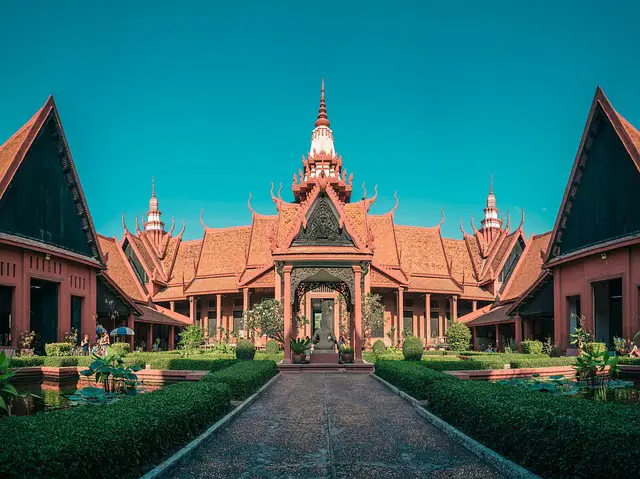
The National Museum of Cambodia is a must-visit destination for history buffs and culture enthusiasts. This museum showcases the country’s rich history through its collection of Khmer art and artifacts.
What to see or do: The museum’s collection includes over 14,000 items ranging from prehistoric times to the Khmer Empire and beyond. Visitors can explore the various galleries, each showcasing a unique aspect of Cambodian history.
Some of the highlights of the collection include impressive sculptures, intricate carvings, and priceless Buddhist artifacts.
Don’t miss: The museum’s most famous exhibit is the statue of the King Jayavarman VII, which stands at over three meters tall and is considered one of the most significant pieces of Khmer art in the world.
Another must-see is the gallery dedicated to the Angkor era, featuring sculptures of Hindu gods and goddesses.
Insider travel tips: – Consider hiring a local tour guide who can provide you with expert insights and additional information about the museum’s collection.
13. Wat Ounalom
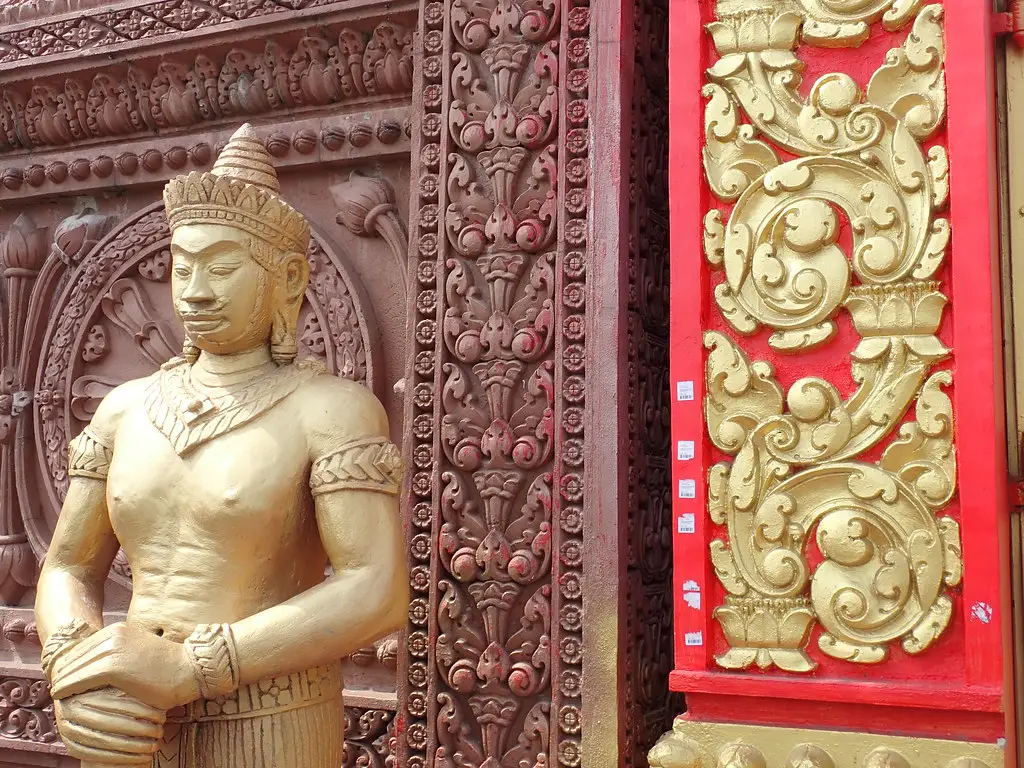
A Buddhist temple complex located in the heart of Phnom Penh, Cambodia, and is considered as one of the most important pagodas in the country.
What to see or do: Visitors can marvel at the beautiful architectural design of Wat Ounalom, which features a central temple surrounded by several small buildings and stupas.
The complex is home to numerous shrines, prayer halls, and libraries, all filled with stunning Buddhist artifacts and relics.
Don’t miss: The chance to see the enormous stupa that contains an eyebrow hair of Buddha himself, as well as the sacred statue of Samdech Huot Tat, one of Cambodia’s most revered religious figures.
Insider travel tips: Don’t forget to dress modestly when visiting Wat Ounalom, and always remove your shoes before entering any of the prayer halls.
Be sure to also explore the nearby markets and street food stalls to taste some delicious local cuisine.
14. Preah Khan
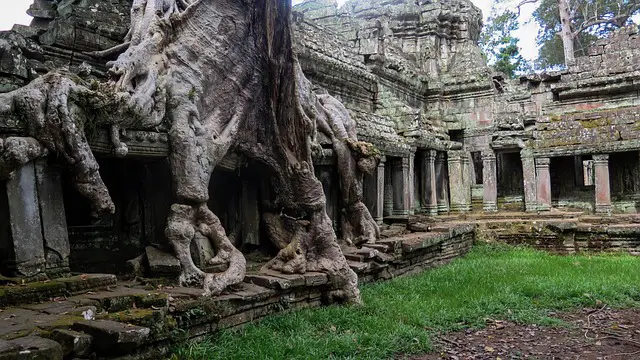
Preah Khan is a temple complex in Angkor, Cambodia.
What to see or do: Visitors can explore the intricate carvings and architecture of the temple, which features a maze-like layout and several narrow corridors. The site includes numerous pavilions, galleries, and courtyards, along with a central sanctuary.
Don’t miss: The temple’s detailed stone reliefs, which depict scenes from Hindu mythology.
Look for the carving of the bodhisattva Avalokiteshvara with 1,000 arms, as well as the carving of a mounted Khmer warrior on the southern wall of the building.
Insider travel tips: Visiting early in the morning or in the late afternoon can help avoid the crowds. Bring sun protection and comfortable walking shoes, as the site requires some walking and can be quite hot.
Be prepared to climb stairs and navigate uneven terrain.
15. Banteay Srei
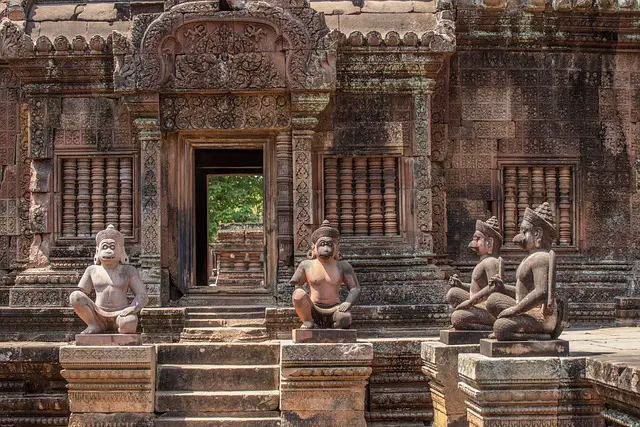
A 10th-century Hindu temple complex dedicated to the god Shiva in Cambodia.
What to see or do: Admire the intricate pink sandstone carvings depicting Hindu mythology and historical events. Explore the temple structures, including the central sanctuary and four gopuras (entrance pavilions).
Don’t miss: The intricate details on every inch of the temple walls, including depictions of dancing apsaras (celestial dancers) and intricate floral patterns.
Insider travel tips: To avoid crowds and experience the temple in the best light, visit in the early morning or late afternoon. Bring plenty of water and wear comfortable shoes, as the temple grounds can be hot and dusty.
Take your time to discover the smaller details of the temple, and bring a guidebook or hire a local guide to understand the rich history and significance of the site.
16. Koh Rong Island
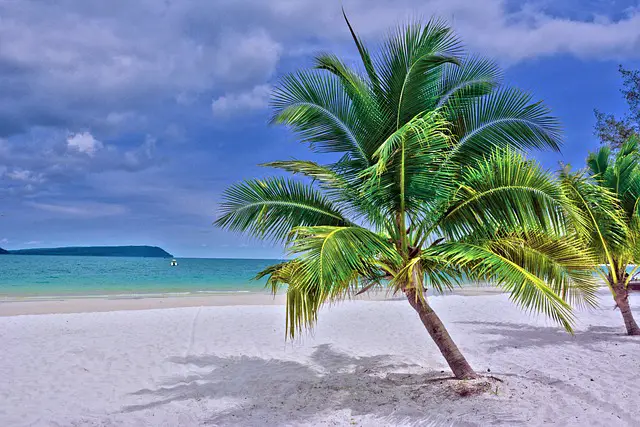
Koh Rong is a beautiful island situated in the Gulf of Thailand, known for its pristine beaches, crystal clear waters, and vibrant marine life.
What to see or do: 1) Snorkel or dive in the azure waters to witness the diverse marine life.
Don’t miss: 1) The Bioluminescent Plankton, a surreal natural phenomenon that occurs in the sea at night.
Insider travel tips: 1) Bring enough cash as ATMs are limited and may not always be working.
17. Kulen Mountain
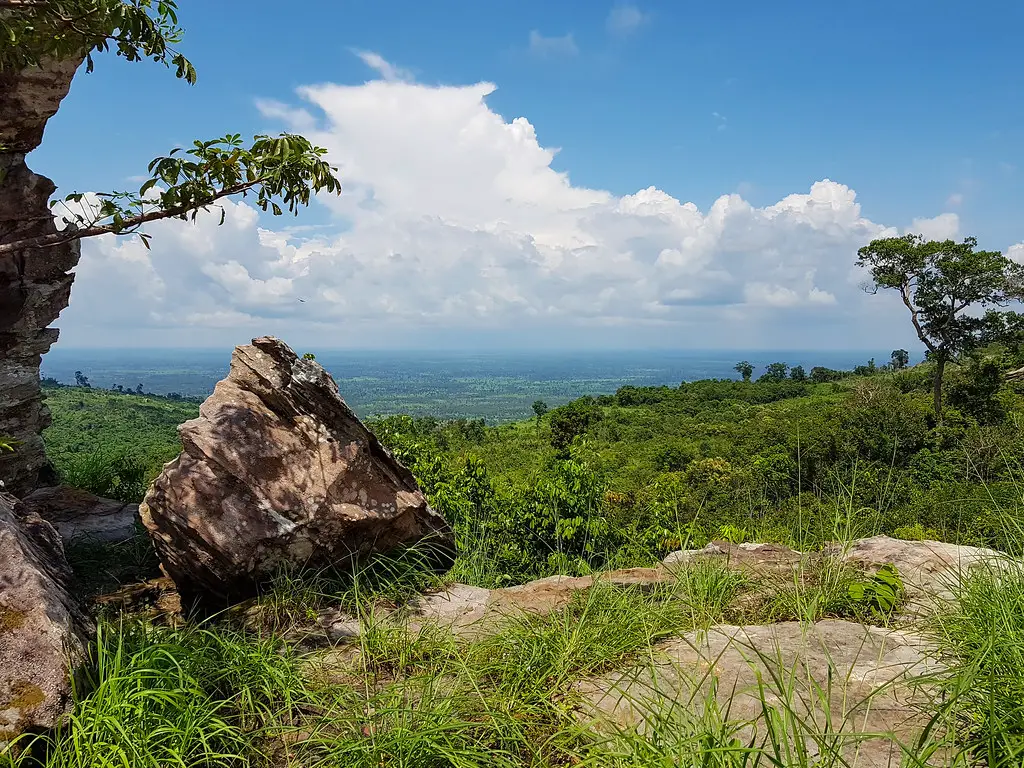
Kulen Mountain is a popular mountain range located in Siem Reap Province, Cambodia.
What to see or do: Hiking, waterfall sightseeing, visit ancient temples and ruins, indulge in local Cambodian cuisine, go on a nature walk, or swim in the natural pools.
Don’t miss: Visit the beautiful Phnom Kulen waterfall, the largest religious monument in the world, Angkor Wat, the reclining Buddha statue in Preah Ang Thom, or the ancient Linga carved riverbed.
Insider travel tips: Opt to visit during the off-season to avoid crowds, bring comfortable footwear for the hike, be mindful of cultural norms while visiting temples, and try local delicacies like beef loc lac and amok.
18. Kampong Khleang Floating Village
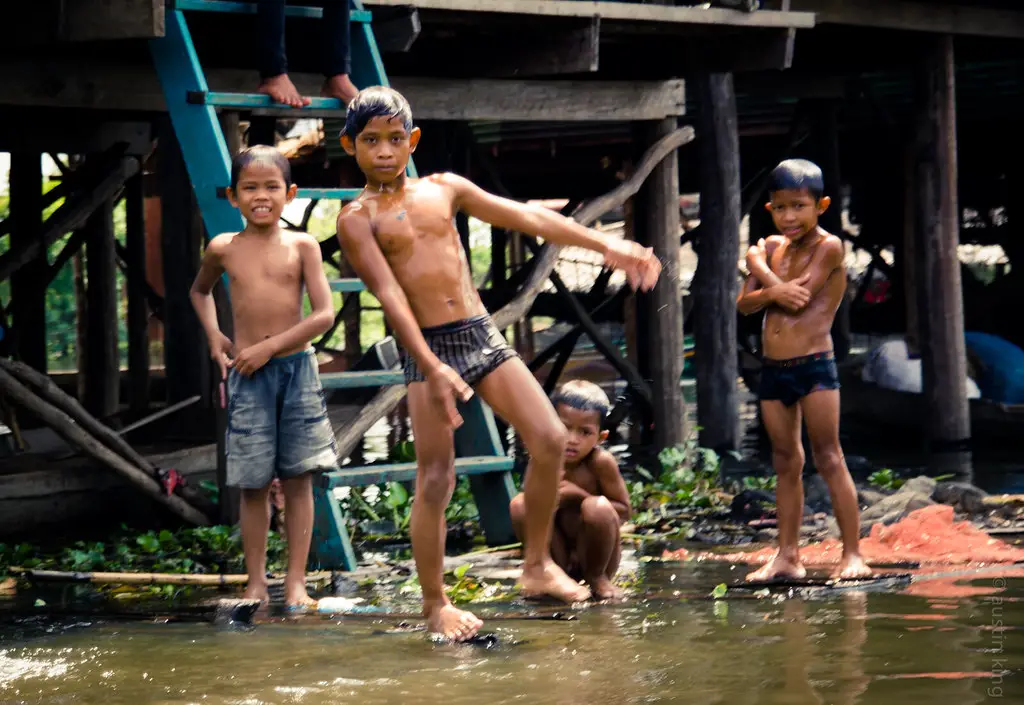
Kampong Khleang Floating Village is a sprawling community of stilted houses and structures built around Tonle Sap Lake, the largest freshwater lake in Southeast Asia.
What to see or do: Marvel at the stunning sight of houses and buildings built high above the water on stilts, offering a unique glimpse into life on the water in Cambodia.
Take a boat tour and navigate the village’s narrow canals and waterways. You can also observe how locals fish and farm, and learn about their daily life and culture.
Don’t miss: Do not miss the opportunity to sample some of the area’s famous freshwater fish, either grilled or fried.
It’s also recommended to visit the Tanle Sap Lake during the dry season, where the lake’s water level is at its lowest, providing a chance to see many of the village’s stilted houses up close.
Insider travel tips: It’s best to plan your visit during the dry season. Bring insect repellent, sunscreen, and a hat as the area can be hot and humid.
It’s also advisable to wear comfortable shoes as the village can be muddy or uneven. Bargaining is a common practice when buying souvenirs or food from local vendors.
19. Battambang Bamboo Train
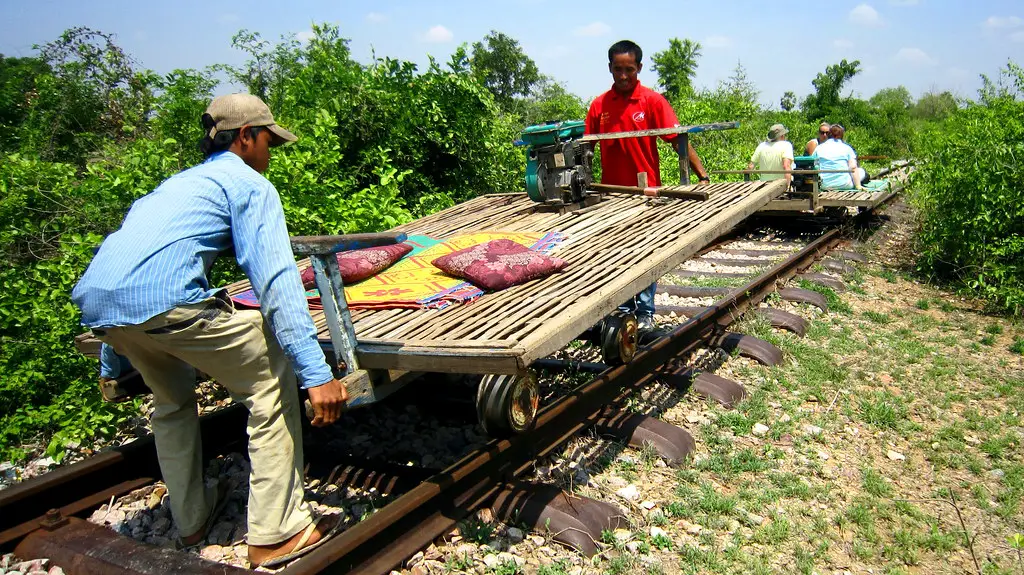
An authentic experience on Cambodia’s famous bamboo train, also known as the nori or ‘norry’, where passengers sit atop a platform made of bamboo slats and travel along a single-track railway.
What to see or do: Enjoy a scenic ride through the rural countryside, passing by rice paddies, small villages and farms. Hop off at one of the stops to visit local markets or villages, or simply enjoy the peaceful surroundings.
Don’t miss: The opportunity to experience this unique form of transportation, which has been used for centuries by locals to transport goods and people.
The bamboo train can reach speeds of up to 40 km/h, so hold on tight!
Insider travel tips: It’s best to visit in the morning or late afternoon to avoid the heat of midday. Bring plenty of water and wear sunscreen, as there is little shade on the train.
Negotiate the price before hopping on, as there is no set fee and haggling is expected.
20. Prasat Kravan
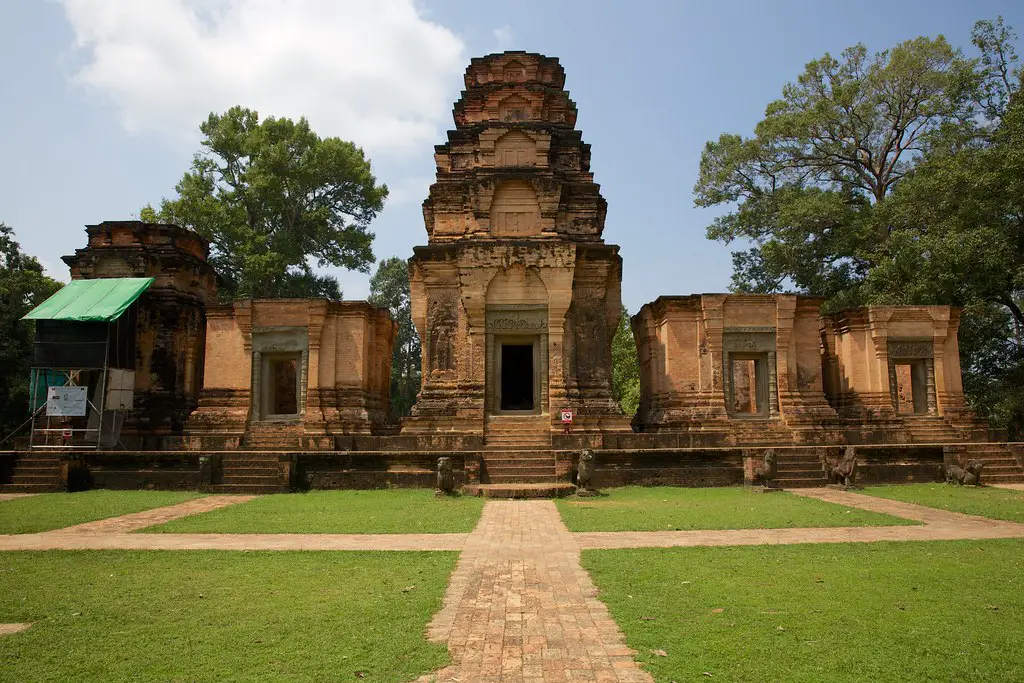
Prasat Kravan is a small Hindu temple located at Angkor in Siem Reap, Cambodia. The temple was built in the 10th century during the reign of King Harshavarman I.
What to see or do: Inside the temple, you can see five towering brick towers that were built to honor the Hindu god Vishnu. The temple is famous for its detailed bas-reliefs that depict scenes from Hindu mythology.
Don’t miss: The intricate carvings of lotus petals and other floral motifs that adorn the temple’s exterior walls. Look closely and you’ll notice other interesting details, such as small statues of deities.
Insider travel tips: Visit Prasat Kravan early in the morning to avoid the crowds that tend to congregate in the afternoon.
Keep in mind that the temple’s narrow corridors and steep staircases can be challenging for some visitors, so wear comfortable shoes and be prepared for a bit of climbing.
21. Royal Palace of Phnom Penh
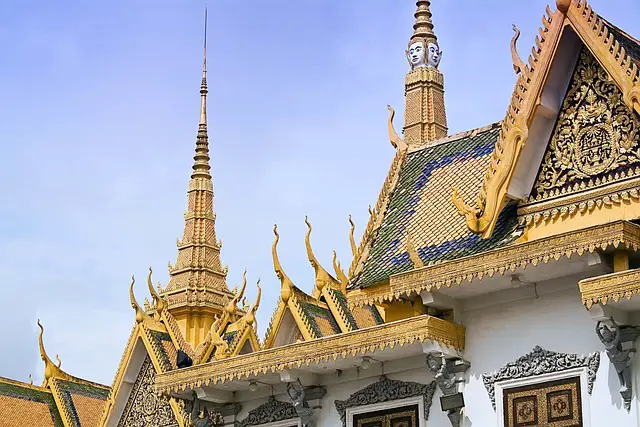
The Royal Palace is a symbol of the Cambodian monarchy and an architectural masterpiece that balances traditional Khmer design elements with French colonial influences.
What to see or do: Visitors can explore the palace’s sprawling complex, which includes a Throne Hall, Silver Pagoda, Khemarin Palace, and lush gardens.
The Throne Hall is a grand reception hall used for official ceremonies, while the Silver Pagoda houses a collection of priceless Buddha statues, gold and silver treasures, and a life-sized crystal Buddha.
Don’t miss: Don’t miss the Emerald Buddha, which is made of solid gold and glittering with diamonds, and the famous Napoleon III Pavilion, erected in France in the mid-19th century and sent to Cambodia as a gift in 1876.
The Pavilion was used by King Norodom Sihanouk for writing and translating.
Insider travel tips: – Visitors must dress modestly and respectfully, covering their knees and shoulders.
22. Preah Vihear Temple
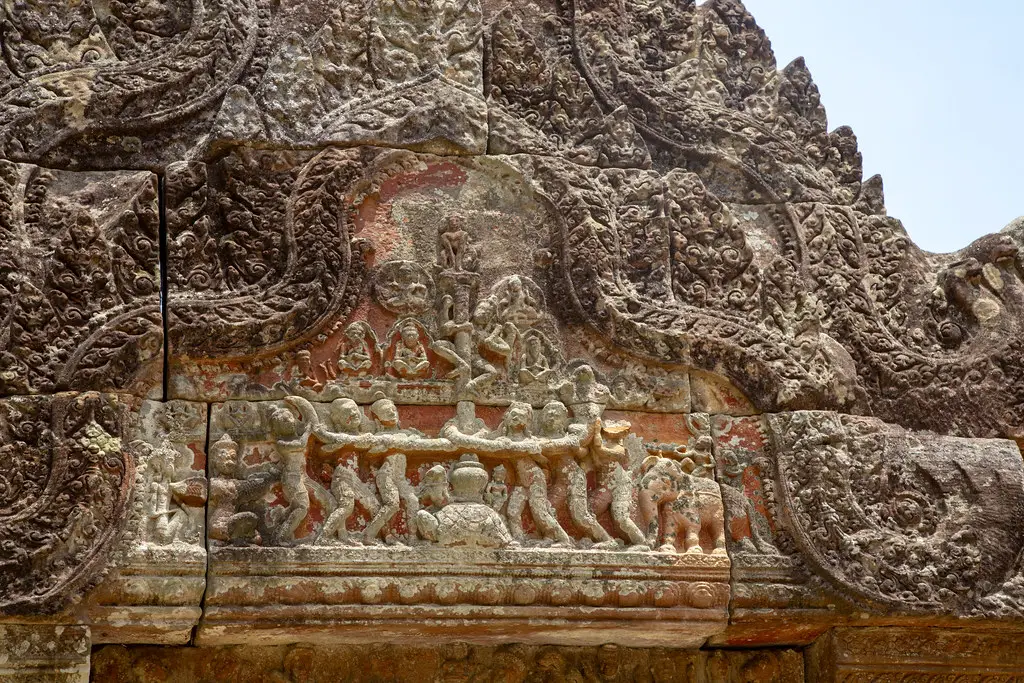
Preah Vihear Temple is a beautiful Hindu temple situated on a steep cliff in the Dângrêk Mountains on the border between Thailand and Cambodia.
What to see or do: Visitors can explore the impressive temple, which dates back to the 11th century. The temple stands at over 500 meters above sea level and offers breathtaking views of the surrounding valley.
Don’t miss: The temple is famous for its stunning architecture, intricate carvings, and unique beauty.
Don’t miss the chance to see the panoramic views of the temple and surrounding landscape from the top of the mountain.
Insider travel tips: Visitors should wear comfortable shoes for the steep climb to the temple. It’s also important to note that the temple is closed during heavy rain.
Additionally, visitors should respect the temple’s dress code by wearing attire that covers their shoulders and knees.
23. Kep Beach
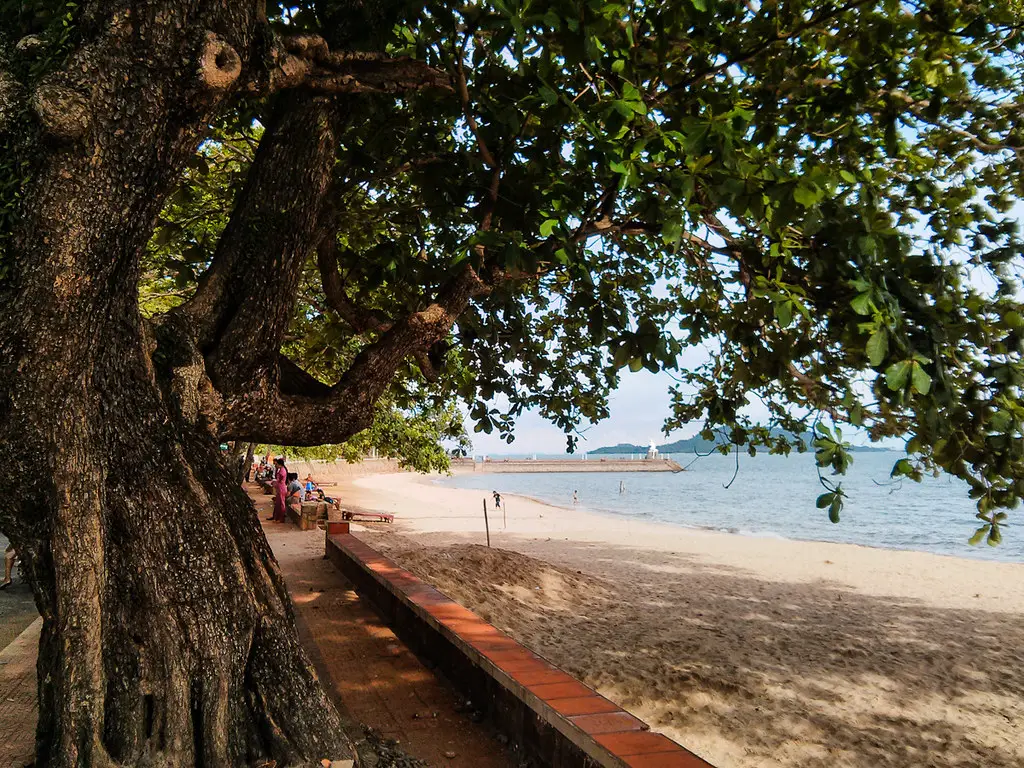
Kep Beach is a picturesque and relatively quiet beach located in the coastal town of Kep, Cambodia.
What to see or do: Visitors can enjoy a refreshing swim in the crystal-clear waters, sunbathe on the golden sand, or take a stroll along the promenade.
There are also plenty of seafood restaurants where you can enjoy a delicious meal while taking in the stunning views.
Don’t miss: Don’t miss the chance to try some of the local delicacies, especially the freshly caught crab which Kep is famous for.
Insider travel tips: If you’re looking to avoid the crowds, it’s best to visit on weekdays as weekends tend to be busier. Also, be sure to bring plenty of sunscreen and water as the sun can be quite strong here.
24. Pre Rup
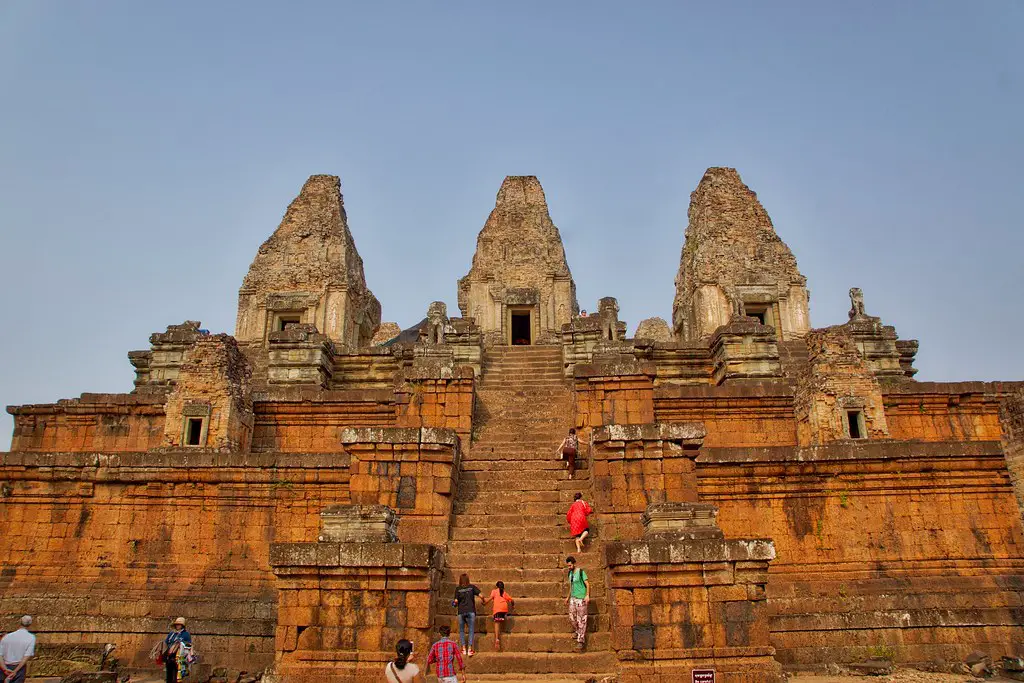
A Hindu temple complex located in Angkor, Cambodia.
What to see or do: The temple’s intricate carvings and architecture are a highlight, as well as the panoramic views from the top tier of the temple.
Don’t miss: The beautiful, pinkish hues of the temple during the sunrise and sunset hours.
Insider travel tips: Visit the temple early in the morning or late in the afternoon to avoid crowds and the heat of the day.
Wear comfortable shoes as the steps up to the top of the temple can be steep and uneven.
25. Bakong
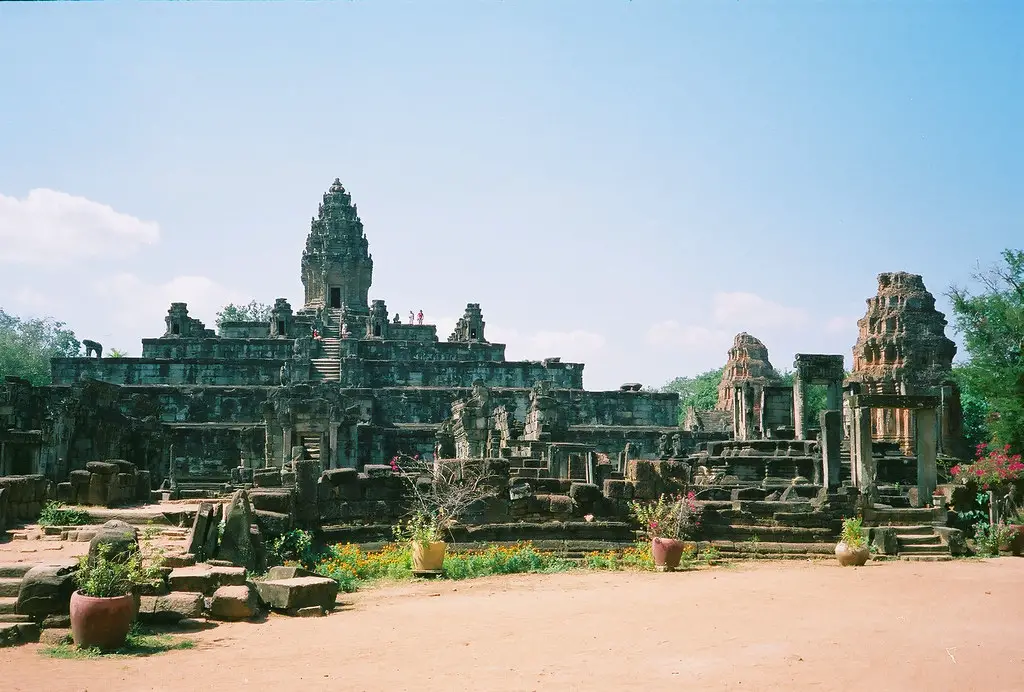
What to see or do:
Don’t miss:
Insider travel tips: Bring plenty of water as it can get hot, wear comfortable shoes for climbing steep stairs, and visit early in the morning to avoid large crowds.
26. Roluos Group
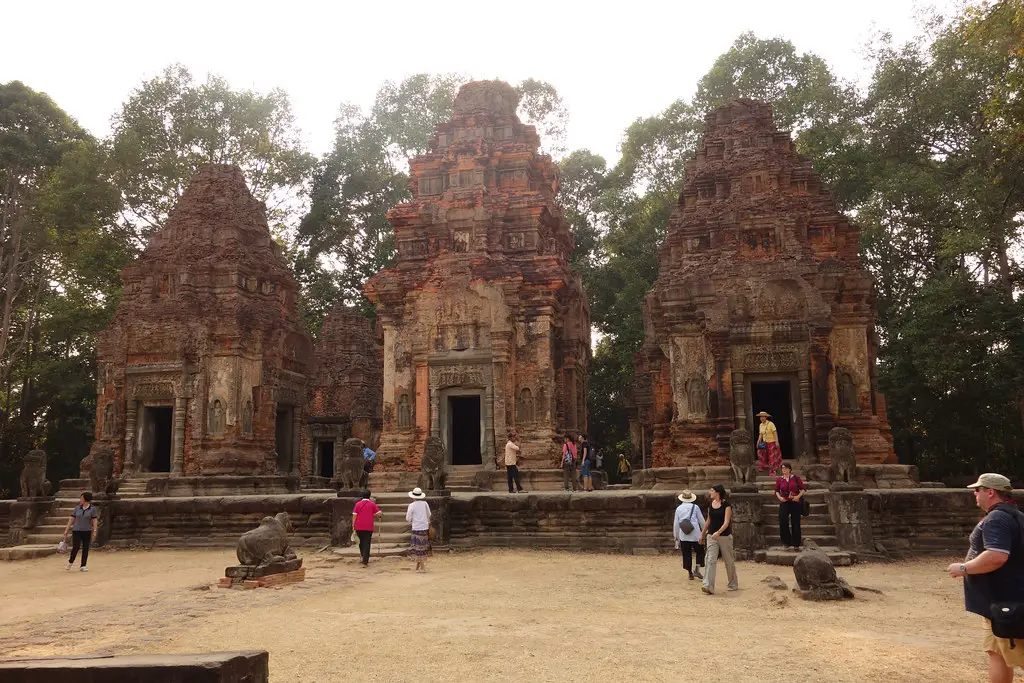
The Roluos Group is a collection of three ancient temples located in the vicinity of Siem Reap, Cambodia.
The temples, known as Bakong, Preah Ko, and Lolei, are considered the earliest examples of Khmer architecture and were built in the late 9th and early 10th centuries.
What to see or do: Visitors to the Roluos Group can explore the ancient temples and their surroundings to gain a deeper understanding of the early Khmer civilization.
The temples are smaller and less crowded than the more famous Angkor temples, making for a more peaceful and intimate experience.
Don’t miss: Make sure to climb to the top of Bakong temple for panoramic views of the surrounding countryside. Also, check out the intricate carvings and bas-reliefs that adorn the temples.
Insider travel tips: Visiting the Roluos Group in the early morning or late afternoon can provide the best lighting for photography and a cooler temperature to explore.
Consider hiring a guide to learn more about the significance and history of these ancient temples.
27. Bayon Style Baphuon
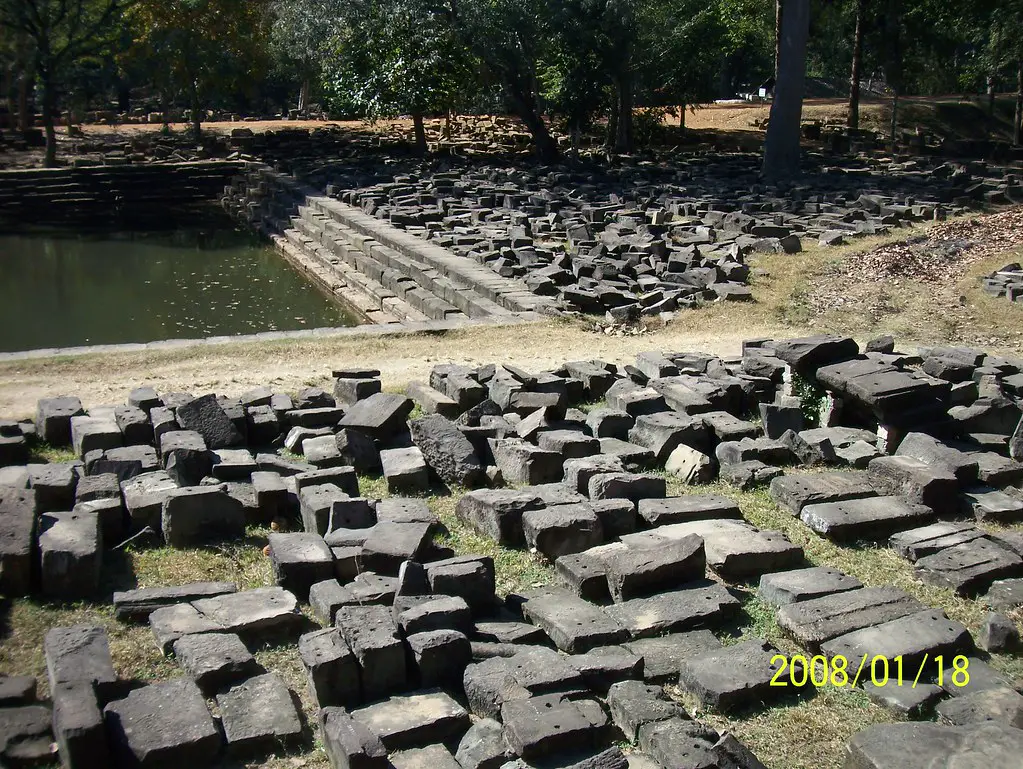
The Baphuon is a massive temple located inside the Angkor Thom complex in Siem Reap, Cambodia. It was built in the 11th century and is dedicated to the Hindu god Shiva.
What to see or do: Visitors can explore the temple’s intricate carvings and bas-reliefs, which depict scenes from Hindu mythology.
The highlight of the temple is its massive reclining Buddha statue, which was added during the temple’s conversion to Buddhism in the 15th century.
Don’t miss: Be sure to climb to the top of the temple for a panoramic view of the surrounding landscape. The views of the Angkor Thom complex and the surrounding jungle are simply stunning.
Insider travel tips: – The Baphuon is best visited early in the morning or late in the afternoon to avoid the crowds and the heat.
💪 Support independent web, support us:
